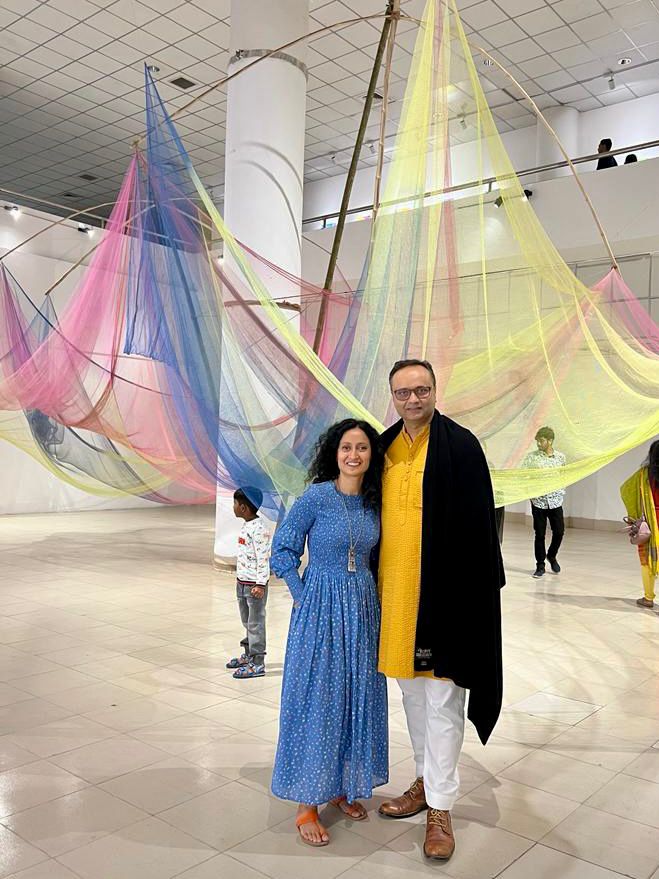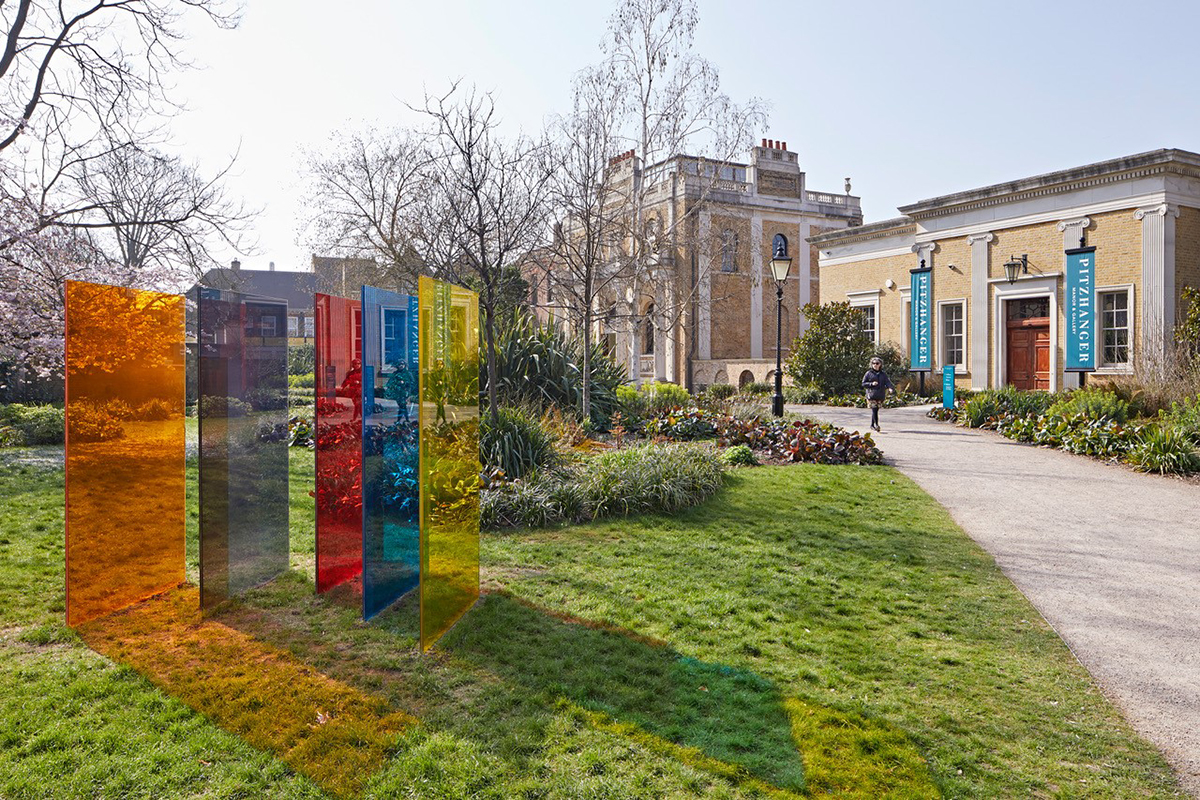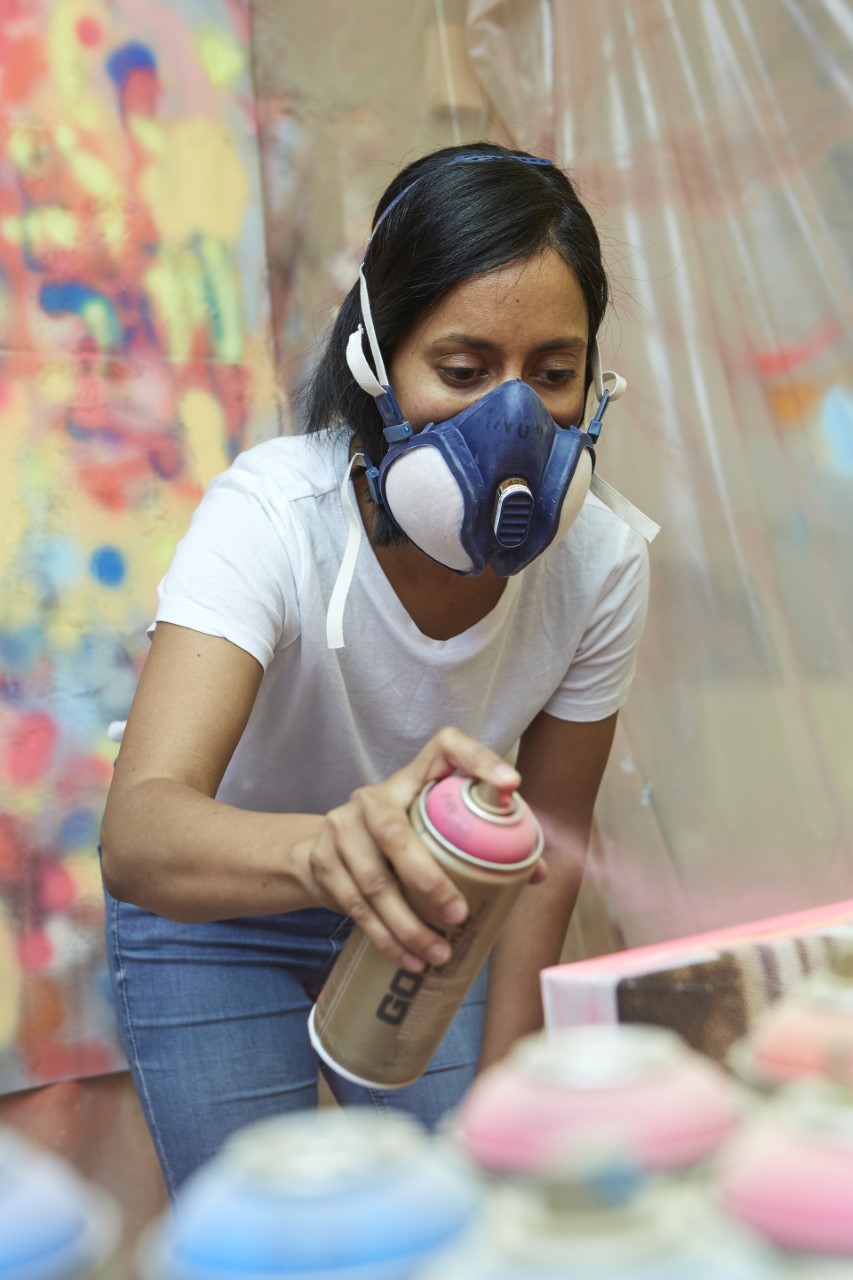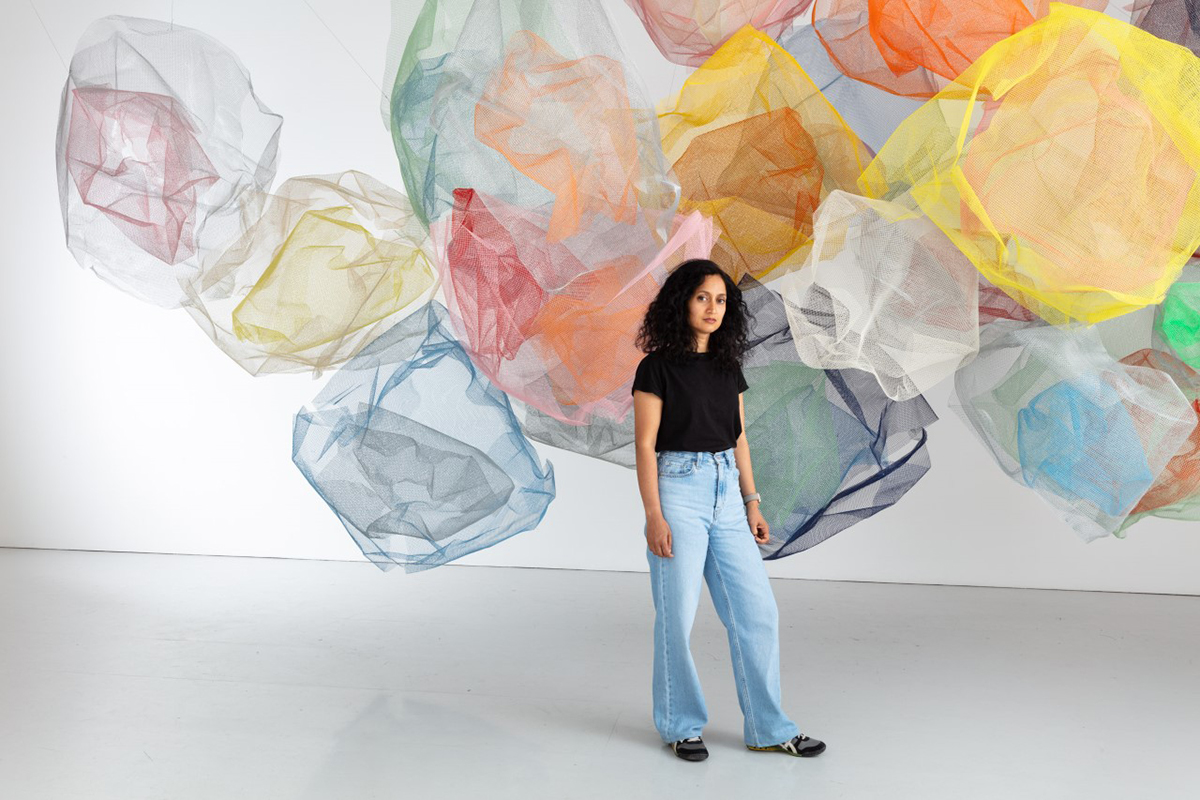
Durjoy Rahman is a collector of Rana Begum’s mesmerising works
The second of the LUX dialogues co-hosted with the Durjoy Bangladesh Foundation covers the hot topic of artists from a region long overlooked despite a powerful legacy and thriving local artistic culture
South Asia was, until recently, dramatically underrepresented in the global art world. Contemporary and historical artists from India, Bangladesh, Pakistan, Sri Lanka and Afghanistan had few champions on the world stage, and their home countries often lacked the infrastructure or cultural will to support them. In this fascinating dialogue, moderated by LUX Editor-in-Chief Darius Sanai, British-Bangladeshi artist Rana Begum chats with Dhaka-based philanthropist Durjoy Rahman, Founder of the Durjoy Bangladesh Foundation, about how things are changing, Western perceptions, and whether everything can be blamed on colonialism or post-colonial legacy
LUX: Durjoy, for artists from Pakistan, India, Bangladesh, is private patronage needed, with institutions not as strong as in wealthier countries?
Durjoy Rahman: Private patronage is essential for the development of art and its ecosystem in South Asia. Western art practices are organised, with support systems between government and private institutions. That’s missing in South Asia. Art and culture have historically been important, but during colonialism, what are now India, Pakistan and Bangladesh were controlled by the British, who didn’t promote them. After independence, there was the Bombay Progressive Arts Group (PAG), but no significant structural developments – and there have been religious and political tensions. Interest has grown in the past two decades but, I think, not yet into in the wider communities.
Follow LUX on Instagram: luxthemagazine
Rana Begum: I feel, in arts terms, that India got attention, Pakistan struggled along, Bangladesh was left behind. It’s only in the past decade, since people like Durjoy have created support networks, that art and attitudes towards it are changing. Durjoy, I think you have three works of mine, and that shows a seriousness that artists require to survive and grow.
LUX: Rana, as a Bangladesh-born, UK-based artist, has the perception of you and your art changed?
RB: I remember, as an artist studying and growing in the UK, being pigeonholed as a “female Muslim artist from Bangladesh”. I tried hard to not be restricted as that – you have to be careful how you and your work are perceived. I see myself as a Bangladeshi-British artist. Ironically, to make it into institutional collections you must meet certain criteria. I don’t fulfil Bangladeshi criteria for a certain institute; I fall under the British category – a bigger pond to select artists from. There are positives and negatives. In terms of my career trajectory, it really started at Dhaka, 2014. That’s where it took off.

Rana Begum’s works blur the boundaries between sculpture, painting and architecture
DR: Before that, people were aware of your practices but didn’t have access to your work. With, say, the basketwork at Dhaka, people saw you take a local material and transform it. So you have been in our ecosystem, but were not properly presented until then.
LUX: Rana, is this an historical moment for art from South Asia? Are we seeing change in its creation, perception and global transmission?
Rana Begum: I saw a shift when I first exhibited at Dhaka Art Summit in 2014. It was amazing to see an international audience. I’ve seen artists’ visibility grow since – and politics around #MeToo and race has meant female artists and artists of colour have become more visible. It’s great to see the calibre of artists in the limelight having the success they deserve.
LUX: So if we had this conversation 10 years ago, would there have been less recognition in Europe of South Asian art?
DR: For the past decade, there has been great momentum around South Asian art, so yes, there was less then. But interest in South East Asian art started around the millennium, and grew with events like Art Dubai.

The geometric patterns in Rana Begum’s works are influenced by Islamic art
RB: Curators and institutes are more aware of what to do to be multicultural and grow a multicultural audience, and galleries are looking for artists working in different ways. My relationship with Jhaveri Contemporary has opened up a wider South Asian collector base. Slowly, things are shifting in how the art worlds work in Bangladesh, India and Pakistan, and they support each other, which gives a strong base for artists.
LUX: Thinking of your 2022 show at Pitzhanger, Rana, how important is it for people to understand your history when they see your works?
RB: Not at all. My work is about experience and what the viewer achieves from it, so, for me, my culture or gender doesn’t dictate that. I can see that background can give an insight, but, for me, it’s not significant.
LUX: Durjoy, what needs to happen around South Asian art in the next ten years in Europe and the States?
DR: South Asian institutions and corporate bodies should build connections with Western institutions, so our voice is heard and our art is seen. UK-produced work is not considered as South Asian or as produced by a South Asian diaspora, so those areas need highlighting. Regional tensions also need straightening out to develop the ecosystem. And I agree with Rana about Bangladesh: we only gained independence in 1971, and there are tensions that must go to get to the next step.
Read more: Liza Essers and Durjoy Rahman on art and the Global South
RB: Having a collector, like Durjoy, is a huge factor. Some artists wouldn’t have opportunities to develop without collectors. It’s also important that artists get support from other artists in positions to give it. For me, the opportunity to go to Bangladesh to see Durjoy is a chance to see what’s going on and what can be done.
LUX: Durjoy, you have three of Rana’s works. What fascinates you personally about her work?
DR: I actually have four of Rana’s series – her paperwork came to my collection from her 2022 Cristea Roberts Gallery exhibition. Rana’s work has many elements that move me – I saw Folds as kites, which are important in Bangladesh, where we have a famous kite festival. Net reminded me of the fishing nets of Sylhet, where Rana is from. She also uses a green that resembles the green of the Bangladesh flag. There is a particular motif that looks like a river flowing, and our rivers look like that exotic pattern. Rana’s work is influenced by Islamic architecture, but I also see it from a Bangladesh perspective.

Rana Begum’s art distils spatial and visual experience into ordered form
LUX: Rana, what’s next for you?
RB: I’m working on some US projects; there’s a site-specific installation at the Dhaka Art Summit; and Dappled Light is touring to Concrete, Dubai from 26 February, then to The Box, London, and to St Albans, where I grew up.
LUX: Fantastic. Durjoy, is there anything you would like to ask Rana?
DR: I would just offer my appreciation and recommendation – keep doing what you are doing; engage through the community and your practice, especially the charity work I have the pleasure to attend. Communities need you, collectors need you. Keep doing those good things.
Find out more:







Recent Comments